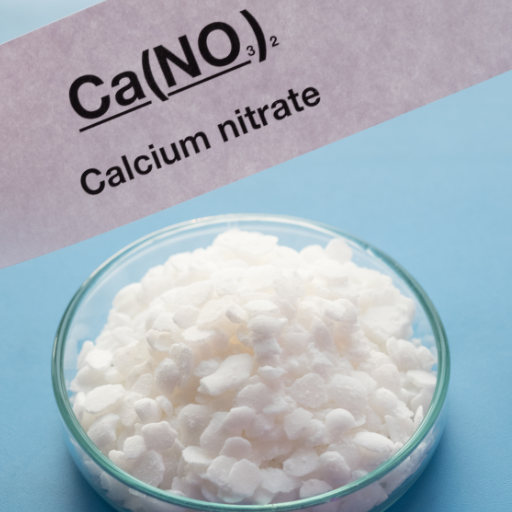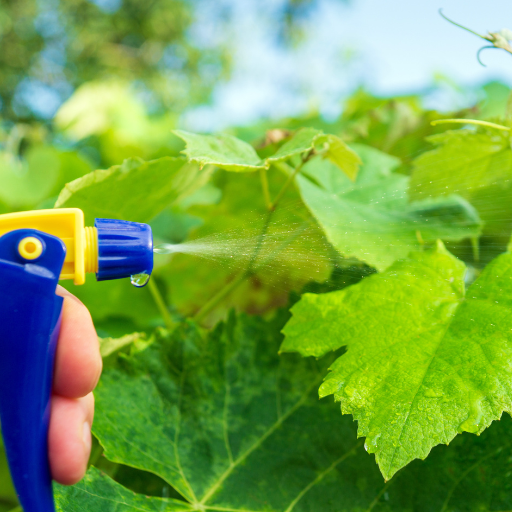Modern agriculture’s crucial component is a low-cost, high-solvency compound that has many uses. This blog post aims to explore various ways by which calcium nitrate fertilizer can be used to benefit different crops and kinds of soils. Farmers and gardeners can develop their plant growth and productivity if they understand this compound’s usefulness for crops in the future. We will look into topics like pH management, nutrient assimilation, and common crop disease prevention to provide a holistic view of how one can optimize his or her agricultural activities.
Why Use Calcium Nitrate Fertilizer?
Calcium nitrate is used as a fertilizer because it is a dual nutrient that has both essential calcium and nitrogen for plant growth. Calcium strengthens plants’ cell walls by defending them from diseases like blossom end rot in tomatoes and bitter pit in apples. Nitrogen, on the other hand, plays a critical role in the production of chlorophyll that promotes leafy growth and hence higher photosynthetic activity. Moreover, this compound dissolves rapidly and absorbs with ease making it an appropriate choice for quick delivery of nutrients into crops so as to improve general plant performance and yield.
What are the Pros of Using Calcium Nitrate?
Calcium nitrate brings various benefits that make it a valuable addition to any fertilization program. Firstly, it serves as an instant source of calcium and nitrogen which are crucial to the development of plants. Improves soil structure, water penetration; at once strengthen plant cell walls to lower risk disease or disorder causing organisms. Chlorophyll production is enhanced by nitrogen in calcium nitrate fostering rich green foliage leading to increased photosynthesis. This type of manure also helps balance soil pH and can be used in different types of agricultural systems including hydroponics and traditional farms too. In conclusion, calcium nitrate leads to healthier plants with more produce.
How Does Calcium Nitrate Fertilizer Influence Plant Growth?
Calcium nitrate as a fertilizer greatly improves plant growth since it supplies two necessary nutrients that are: calcium and nitrogen respectively. The purpose behind using the chemical compound is because its high concentration acts as fortification for tomato’s cell wall against physiological disorders while improving their stalk strength thus ending up having real roots systems versus leaves carrying fruits. Furthermore, Nitrogen; vital component required during chlorophyll synthesis supports photosynthesis thereby enabling vigorous leaf growth of plants generally . Also, use of calcium nitrate aids balancing pH levels within soils resulting in faster- growing healthy plants through absorption where nutrient uptake is efficient due its solubility.
What Plants Benefit Most from Calcium Nitrate?
Calcium nitrate is most helpful to different crops such as tomatoes, peppers, lettuce and many other leafy vegetables. This is because it prevents common problems like blossom end rot in tomatoes and even peppers. The development of these green leafy vegetables is enhanced by nitrogen and calcium which are vital nutrients for them. Moreover, orchard trees like apple and citrus trees also enjoy the same benefits producing better quality fruit with higher yield.
What Nutrients Does Calcium Nitrate Fertilizer Provide?

The calcium nitrate fertilizer supplies two main nutrients: nitrogen (N) and calcium (Ca). The role of calcium is vital in strengthening plant cell walls for disease prevention and promoting root, stem and fruit growth. Nitrogen is essential for synthesis of chlorophyll, which enhances photosynthesis thus leading to vigorous growth with lush green leaves. This combination strengthens plants, improves soil pH and enhances nutrient availability hence making crops healthier and more productive.
Understanding the Role of Calcium and Nitrogen
Calcium and nitrogen are both essential nutrients for plants though they perform different functions but work together. Calcium (Ca), on the other hand, develops strong cell walls that prevent diseases from affecting crops. It helps in root development where it enhances nutrient uptake as well as water movement within the plant. Key soil deficiency symptoms include blossom end rot due to insufficient cell wall formation in tomatoes; hence soils need to contain 65-70% base saturation of Ca²+ ions.
Nitrogen also forms part of chlorophyll molecule responsible for photosynthesis in plants such that lack thereof inhibits vegetative growth resulting into yellowed leaves or stunted growth. In young growing plants, recommended range of soil nitrogen levels should be between 20-30 ppm (parts per million) to ensure good growth rates occur. Insufficient amounts may lead to stunted growth with yellowing leaves known as chlorosis.
Combining these two gives a balanced supply of calcium as well as nitrogen; when employed with care, this enriches cells while balancing soil pH thereby increasing nutrient absorption capacity hence yield enhancement.
How Does Calcium Nitrate Help with Calcium Deficiencies?
By providing readily available forms of calcium that can be easily absorbed by plants, calcium nitrate addresses calcium deficiencies effectively. When introduced into the soils, dissociation takes place to give rise to ionized form like NO3–(nitrate ions) and Ca2+(calcium ions). Ions derived from this compound are mainly responsible for developing firm cell walls and membranes required by the plants to maintain their structure and keep off diseases. The suggested application range of calcium nitrate is usually between 1-2 pounds per 100 square feet of land with a view to ensuring adequate supply but without overloading the soil.
Also, it helps in maintaining proper soil pH which is essential for root development and nutrient uptake. Through this dual process, calcium is not only present in but also actively utilized by plants. When growing crops like tomatoes and apples, whose common symptoms such as blossom end rot or bitter pit respectively often indicate lack of sufficient calcium, farmers can therefore apply calcium nitrate to prevent these problems while increasing the overall yields.
What Makes Calcium Nitrate Water-Soluble?
The solubility of calcium nitrate in water results from its ionic character. Made up of Ca²⁺ (calcium ions) and NO₃⁻ (nitrate ions), it dissolves easily in water as the ionic bonds holding them together weakens when they come into contact with water molecules. This means that when dissolved in water, all the Ca²⁺ as well as NO₃⁻ ions become free thus being absorbed through plant roots via drip systems or sprayed on leaves via foliar spraying technique. Its high solubility makes it possible for plants to absorb nutrients quickly thus leaving no residues behind; hence this fertilizer is very versatile and efficient as well.
How Does Calcium Nitrate Fertilizer Improve Fruit and Vegetable Quality?

Enhancing the quality of fruits and vegetables is done by calcium nitrate fertilizer which prevents deficiencies which lead to poor health of plants. It offers necessary calcium that boosts fruits’ firmness, besides reducing incidences for example blossom-top decay in tomatoes and bitter pith in apples. Besides, it helps ensure healthy nutrient uptake and rapid plant growth due to its nitrate element. Furthermore, calcium nitrate assists in sustaining the right soil pH that is important for better assimilation into root systems of vital nutrients. This blend brings about superior texture, shelf life prolongation and more disease resistance resulting into better produce quality.
How to Prevent Blossom End Rot in Tomatoes and Peppers
The main cause of blossom end rot in tomatoes and peppers is lack of calcium, which is mostly brought about by inconsistent watering and soil conditions. This condition can be prevented by ensuring that plants are supplied with a steady stream of water by maintaining even levels of soil moisture during the growing season. This includes mulching which helps maintain soil moisture and reduce fluctuations.
Nitrate calcium can be used as fertilizer for direct supply of the required calcium. The right dosage should be like 1-2lbs per 100 square feet depending on the analysis results or specific crop requirements. It is also a temporary approach that ought to be accompanied by good soil management practices. One can use solutions such as calcium chloride sprays (4 tablespoons per gallon of water) to quickly enhance calcium levels in them. However, this alone does not lead to a permanent solution without sound soil management practices.
Soil salinity affects the uptake of calcium. Therefore, the soil salinity level should not exceed 1.5 mhos/cm. Another factor contributing to better nutrient absorption is keeping the soil pH at around 6.2 – 6.5 units. Also, regular assessment tests will help monitor for those parameters so that they may adjust accordingly and hence have smooth growth without risks related to blight-ending rot.
Improving Texture and Flavor of Fruits
Enhancing the texture and flavor of fruits requires a multi-pronged approach involving the right nutrition, watering, and environment. Some critical nutrients like potassium and magnesium are essential to improving fruit quality. Through regulating water and nutrient transport, potassium affects firmness or sweetness of the fruit directly. If you have soil test results showing low levels of potassium sulfate then apply this at 1 or 2 pounds per 100 sq. ft. The flavor can also be enhanced when one uses Epsom salts which is basically Magnesium sulphate applied at a rate of one tablespoon per gallon of solution.
It is important to maintain consistent watering since uneven moisture levels may result in varying fruit development as well as quality. Drip irrigation systems contribute to precise water application and maintenance of uniform soil moisture content. Moreover, slow-releasing nutrients can be conserved by organic mulches such as straw or compost so that they can help to retain soil moisture.
Fruit texture and flavor are substantially influenced by environmental conditions too. Enough sunlight ensures proper photosynthesis which is needed for sugar manufacture in fruits. Therefore place your fruit- bearing plants in areas that receive not less than 6-8 hours direct sunshine every day. Regular tests on soil pH coupled with its adjustments facilitate better nutrient uptake since the optimal pH range lies between 6.0 – 6.5 leading to improved plant health overall.Maximized returns in terms of fruit taste, flavourand texture can be achieved by concentrating on these fundamental factors
How to Properly Use Calcium Nitrate Fertilizer

Calcium nitrate fertilizer is a great source of essential nutrients for plants, including calcium and nitrogen. Effective use starts by selecting the right application rate based on specific plant needs and soil test results. Normally, it is suggested to apply at a rate of 1 – 2 pounds per 100 square feet. You should gently mix the fertilizer into the soil so it does not harm the roots.
For liquid feed, dissolve one tablespoonful of calcium nitrate in one gallon of water. Apply this solution directly to ground around plants’ bases every 1-2 weeks ensuring an even spread. This technique is especially helpful because it deals with cases associated with calcium deficiencies which mostly reveal themselves as blossom end rot in tomatoes and other crops.
Close monitoring of soil moistness is also important since properly watered plants utilize nutrients more efficiently. Combining drip irrigation with fertilizers can enhance nutrient uptake appreciably. Finally when applying fertilizers ensure protective gear such as gloves and goggles are used for safety purposes only, following these rules enhance plant growth, fruit quality improvement and avoided deficiency symptoms from lack of nutrients.
When should I use calcium nitrate?
Plants are usually nutrient supplemented with calcium nitrate during their critical growth stages. In most crops this would be early in the growing season, during active growth phases and just before flowering or fruiting. For example, calcium nitrate can help establish strong root systems if applied early in the season while mid-season applications support overall plant vigor and development. Applying calcium nitrate to tomato plants once at planting and then every 4-6 weeks will prevent calcium deficiencies and enhance fruit quality.
It is important to follow some technical parameters such as rates of application and frequency when using calcium nitrate. Usually, based on soil test results it is recommended that you apply between 1-2 pounds per 100 square feet. If used as liquid feed dissolve one tablespoon of calcium nitrate per gallon water for bi-weekly application for best results. Maintain consistent soil moisture levels while considering drip irrigation to improve nutrient uptake into the plants’ system’s health benefits of slurry application of environmental control induced by sea renders plants more productive.
How often should I use calcium nitrate on my garden?
How frequently you use calcium nitrate in your garden depends on individual plant requirements and soil conditions. Typically, you should consider applying it every two to four weeks throughout the growing season. An initial dressing at planting followed by subsequent ones during vegetation through fruiting stages gives best results. Soil test results ought to be relied upon always for determination of rate of application depending on crop needs where possible so as not to over fertilize or cause nutrient imbalances. Regular monitoring and adjustments will ensure your plants receive the optimal nutrients for healthy growth.)
What Are the Best Application Methods for Calcium Nitrate Fertilizer?
Several effective application methods for calcium nitrate fertilizer exist, each tailored to specific gardening needs and plant conditions.
- Broadcast Application: This method spreads the calcium nitrate evenly across the soil surface. It is most effective when incorporated into the soil before planting. The recommended rate is 1 to 2 pounds per 100 square feet, depending on soil test results.
- Side-Dressing: During the growing season, calcium nitrate can be applied as a side-dress near the base of plants. This method benefits plants with high calcium requirements such as tomatoes and peppers. Apply at 4-6 weeks intervals, using a rate of 1 to 2 tablespoons per plant, ensuring it is lightly worked into the soil and then watering.
- Fertigation: Integrating calcium nitrate into an irrigation system allows for efficient, controlled delivery directly to the root zone. For liquid feeding, dissolve 1 tablespoon per gallon of water and apply bi-weekly. This method ensures consistent nutrient uptake and prevents deficiencies.
Technical parameters such as application rates and frequency should always be based on soil test results and specific crop requirements to avoid over-fertilization and nutrient imbalances. Regular monitoring and adjustments are crucial for maintaining optimal plant health.
Can Calcium Nitrate Be Used as a Foliar Spray?

Yes, calcium nitrate is a foliar spray. It is a healer for calcium deficiency and facilitates the growth of healthy cell walls when applied as a foliar spray. Usually, 1-2% solutions of calcium nitrate (10 to 20 grams per liter) are used for foliar application. Leaf scorching could be avoided by applying it at cooler times during the day; this will ensure uniform coverage without any run-off. It is therefore crucial for crops like tomatoes, apples and peppers that suffer from low calcium uptake causing blossom-end rot. Regular applications with an interval of about ten to fourteen days boost plant health and increase crop yields.
Merits of Calcium Nitrate Foliar Sprays
Foliar sprays which have calcium nitrate confer several advantages on plants in terms of their growth and development. Use of such products provides swift solution to nutritional imbalances because leaves directly take up nutrients instead of relying on soil nutrient supplies as the main source. This can be very useful especially in situations where quick results are required or where soils are not able to hold nutrients well. The third advantage is that it promotes overall health of plants through cell wall strength improvement, enhancing disease resistance and fruit quality enhancement in general. For example, tomatoes or peppers can develop blossom end rot if its leaves receive no sprayed with calcium nitrate solutions or bitter pit in apples as well as tip burn in leafy vegetables.
From technical points of view, 1-2% concentration ranges (10-20 grams per liter) should be employed during foliar spraying using calcium nitrate based solutions. Ensure that you apply during cooler parts of the day (preferably early morning or late afternoon) so as to mitigate against burning incidence on leaves while maximizing absorption into plant tissues. Depending on the level of severity and the extent of crop needs, spraying routines should be maintained after a period extending between 10-14 days has been observed. Furthermore, regular checks as plants are growing and the response that they give can easily allow for further optimization of the effects of foliar treatments.
How to Make and Apply Calcium Nitrate Spray
To prepare calcium nitrate sprays, dissolve 10-20g calcium nitrate in one liter of water to produce a 1-2% solution. This is very important since undissolved crystals could damage the nozzle or just clog it, inhibiting smooth spraying onto leaves. Once your spray has been prepared, apply it under favorable conditions to enable maximum effectiveness with minimum stress on plants.
Select cooler parts of the day, such as early morning or late afternoon, to prevent leaf burn and increase nutrient uptake. When spraying over the leaves, ensure that your solution spreads evenly, allowing the upper and lower sides to absorb nutrients. Adjust this frequency according to deficiency levels and crop-specific needs, repeating it every 10-14 days.
It is possible to fine tune application schedules by observing plant reactions thus ensuring proper nutrient amounts are administered. In addition, consider doing soil testing so as better understand underlying nutrient levels hence fine-tuning your overall fertilization program should be based on this information too.
Precautions When Using Calcium Nitrate as a Foliar Spray
- Avoid High Temperatures: Applying the spray during the day’s heat can cause the leaves to burn. Aim to spray during cooler periods such as early morning or late afternoon. Research indicates that foliar application at temperatures above 85°F can reduce the solution’s efficacy and increase the risk of phytotoxicity.
- Watch for Rain: Rainfall shortly after application can wash away the nutrients before the plant absorbs them. Ensure there is no rain forecast for at least 24 hours after spraying. Studies have shown that rainfall within 2 hours of application can reduce nutrient uptake by up to 50%.
- Proper Dilution: Maintaining the correct dilution rate is crucial to preventing nutrient imbalances and potential leaf damage. A concentration of 1-2% calcium nitrate solution is recommended. Higher concentrations can cause leaf burn, with foliage showing signs of stress within 48 hours post-application.
- Check Water Quality: Ensure the water used to prepare the solution is clean and free from contaminants, which could react with calcium nitrate and reduce its effectiveness. Water with a pH between 5.5 and 6.5 is ideal for foliar sprays.
- Avoid Windy Conditions: Spraying in windy conditions can lead to uneven application and drift, potentially affecting non-target plants. It’s best to spray on calm days to ensure a uniform coverage.
- Protective Gear: Always wear appropriate protective equipment such as gloves, safety glasses, and masks to avoid direct contact with the solution. Calcium nitrate is caustic and can cause skin and eye irritation upon contact.
- Monitor Plant Response: After application, monitor plants closely for any signs of over-fertilization or nutrient burn, such as yellowing or browning of leaves. Based on plant response, adjustments in concentration or frequency may be necessary.
Implementing these precautions ensures the safe and effective use of calcium nitrate foliar sprays, maximizing benefits while minimizing risks to plants and applicators.
Addressing Common Issues

Some of the common problems associated with foliar spraying of calcium nitrate include leaf burns, poor absorption and imbalances in nutrients. To prevent leaf burn, it is important to dilute appropriately and avoid spraying during the hottest times of the day or when there is direct sunlight. Inadequate absorption results from bad water quality or pH levels that are not as required. Spraying with clean water that has a pH value ranging between 5.5 and 6.5 will help in nutrient uptake.
Once other fertilization practices are ignored, this may lead to nutrient imbalances. Therefore, make sure you have a balanced fertilization schedule so as to avoid nutrient imbalance mishaps. More detailed information can be sought from agricultural extension services or soil and plant nutrition expert.
Can Calcium Nitrate be Used with Other Fertilizers?
Calcium nitrate can also be used with other fertilizers but parameters must be considered first. Mixing calcium nitrate with phosphates and sulfates in the same tank should be avoided since it might result into precipitation making these nutrients unavailable for plants. It also goes well with nitrogenous fertilizers such as potassium which usually are combined for balanced plant growth and development regimen. There is a need to follow manufacturer guidelines on mixing rates and application rates as well as testing compatibility via a jar test before extensively using it in large-scale farming activities.Further consultations could involve agricultural consultants or conducting soil tests aimed at guiding decisions about combinations suitable for specific crop requirements.
Managing Overuse of Fertilizer
Excessive fertilizer use has several negative impacts on plants and the environment at large. This best practice helps control these risks by minimizing fertilizer usage. Always adhere to recommended application rates provided by your fertilizer manufacturer to minimize excessive application, which can lead to nutrient runoff, out-of-balance soil fertility, and contamination of groundwater.
Notably, regular soil tests should take place prior any fertilization process in order to establish whether some nutrients are needed. The aim of this is to ensure that only those nutrients which are lacking in the soil are added to it avoiding wastage and subsequent overuse. Such tests provide scientific parameters like NPK ratios for specific crops as well as other micro-nutrient levels hence allowing for proper scheduling of fertilization programs.
The other key aspect is timing your fertilizer application. If you apply them before a heavy downpour, their effectiveness reduces because they leach out and runoff, polluting water and making them less effective. Instead, fertilizers should be applied during dry spells followed by light irrigation to facilitate the penetration of nutrients into the soil.
Lastly, slow-release fertilizers can help manage nutrient availability and minimize overuse. They release nutrients gradually over time, thus reducing the incidence of high amounts in the soils, which can affect plants and ecosystems.
Consultations with local agricultural experts and extension services can help tailor recommendations based on specific crop conditions and soil types resulting in sustainable and efficient use of fertilizers.
Reference sources
- Trees.com
- Source: Calcium Nitrate Fertilizer – How to Use It on Your Plants
- Summary: Trees.com explains that calcium nitrate fertilizer is used to prevent calcium deficiencies in plants and replenish their calcium levels. It highlights the role of calcium in strengthening plant cell walls and improving overall plant health.
- Gardening Know How
- Source: What Does Calcium Nitrate Do For Plants
- Summary: Gardening Know How describes the use of calcium nitrate as a foliar spray to treat and prevent blossom end rot and cork spot. The article emphasizes its effectiveness in addressing calcium-related plant issues.
- IFFCO
- Source: Calcium Nitrate Water Soluble Fertilizer
- Summary: IFFCO outlines the benefits of calcium nitrate as a water-soluble fertilizer. It details its uses in drip irrigation systems to provide essential calcium and nitrogen, as well as its ability to control certain plant diseases and improve crop yields.
Frequently Asked Questions (FAQs)
Q: What is calcium nitrate fertilizer?
A: Calcium nitrate fertilizer is a source of water-soluble calcium and nitrogen, making it an essential nutrient provider for plants. It is especially beneficial for addressing calcium deficiency in plants, ensuring better growth and productivity.
Q: How is calcium nitrate fertilizer different from other fertilizers?
A: While other fertilizers might focus solely on providing nitrogen, calcium nitrate fertilizers offer both calcium and nitrogen to plants. This dual nutrient supply supports not only overall growth but also the strength and health of plant structures.
Q: Why should I use calcium nitrate fertilizers in gardening?
A: Using calcium nitrate fertilizers in gardening helps to maintain optimal calcium levels in the soil, which prevents calcium deficiency in plants. This leads to healthier plants that can produce better fruits and flowers.
Q: How should calcium nitrate fertilizer be applied?
A: Calcium nitrate fertilizer can be applied as a side dress, which means placing it along the sides of plants. It can also be mixed with water and used as a foliar spray because it is highly soluble in water.
Q: Can calcium nitrate fertilizers be mixed with other fertilizers?
A: Yes, calcium nitrate fertilizers can be mixed with other fertilizers like ammonium nitrate or calcium ammonium nitrate to provide a balanced nutrient supply to plants. However, it is essential to ensure compatibility before mixing.
Q: What are the benefits of using granular calcium nitrate fertilizers?
A: Granular calcium nitrate fertilizers provide a consistent and slow release of nutrients into the soil. They are easy to handle and spread, making them convenient for large-scale agricultural use.
Q: How does calcium nitrate fertilizer benefit plants?
A: Calcium nitrate fertilizer benefits plants by providing nitrate nitrogen for fast-acting growth support and alongside strength-building calcium which boosts the structure and resilience of plants.
Q: Are there specific crops that particularly benefit from calcium nitrate fertilizers?
A: Yes, many fruits and vegetables, such as tomatoes, peppers, and apples, benefit significantly from calcium nitrate fertilizers. These crops often demand high calcium levels for optimal growth and fruit quality.
Q: How much calcium nitrate per plant should be used?
A: The amount of calcium nitrate per plant can vary depending on the specific needs of the plant species and the current calcium deficiency status. It is always best to refer to specific guidelines for the crop you are growing.
Q: Is calcium nitrate fertilizer eco-friendly?
A: Yes, calcium nitrate fertilizer can be considered eco-friendly when used according to recommended guidelines. It promotes healthier plant growth, which can lead to better soil structure and reduced erosion, benefiting the environment.






